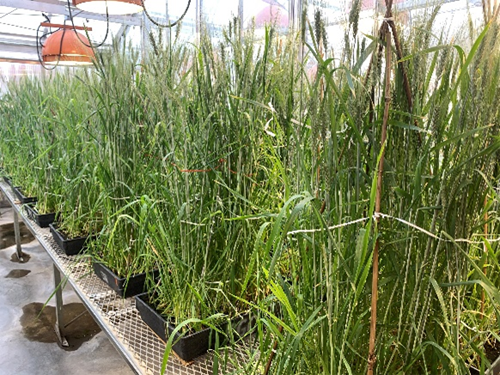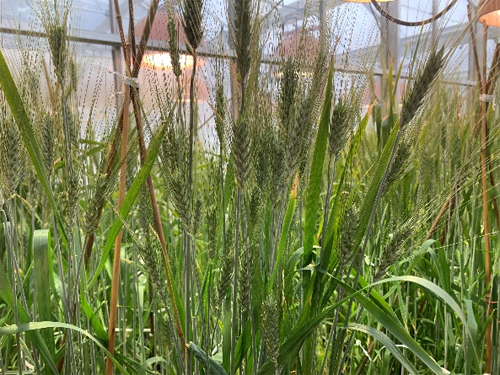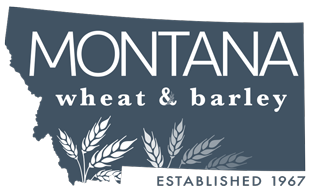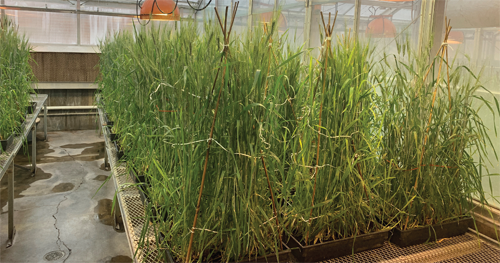Funded by the Montana Wheat and Barley Committee since 2017, Dr. Mike Giroux’s durum program has a goal of developing durum varieties that are adapted to Montana’s growing conditions. Dr. Giroux and MSU Research Associate Andy Hogg work to develop durum for the highly diverse growing regions of Montana.
The durum lines in development are grown in replicated trials. The trials are conducted at the Montana Agricultural Experiment Stations in areas where durum is grown. Some trials are also grown at off station plots and planted and harvested by the Northern and Eastern Ag Experiment Station faculty and staff.

Seeds harvested from lines in the early and later stages of cultivar development are then tested at the appropriate product quality levels. Lines in the earliest stages of development are assessed by measuring seed color, seed size parameters, protein content, and protein strength. Lines in the later stage of development are advanced to milling quality tests along with larger scale protein strength tests.
Dr. Giroux’s program is focused on the breeding objectives that are closely aligned with what Montana producers want in a durum variety. The most important traits to growers are yield, protein, standability, and end use qualities. Dr. Giroux’s program is relatively new but has already released three varieties, the standard height variety Lustre, and two in 2022, the standard height MTD18348 and semi-dwarf MTD18313. The quick turnaround to release competitive varieties is a significant accomplishment and reflects Dr. Giroux and Research Associate Hogg’s enthusiasm for conducting research and releasing varieties that can benefit growers.

“The new durum releases MTD18348 and MTD18313 have excellent yield under dryland conditions, good disease resistance, pasta color and good protein strength,” said Dr. Mike Giroux, Professor and Head of the Plant Sciences and Plant Pathology Department at Montana State University. “The durum program is now offering alternative tools for producers such as the semi-dwarf line MTD18313 which offers earlier flowering and maturity along with excellent standability and yield. MTD18348 offers higher yield under dryland conditions than currently grown varieties and excellent product quality.”

Durum Breeding Objectives
- Coordinate the durum intrastate yield trials.
- Develop new breeding populations and conduct early generation durum seed quality testing.
- Measure product quality traits including seed size, protein content, protein strength, seed, and meal color.
- Selection for added value traits including pasta color retention, low cadmium, and increased pasta firmness.
- Carry out breeding projects to select high yielding durum with excellent product quality adapted to Montana growing environments.
- Integrate improved sources of disease resistance and product quality.
Develop and test semi-dwarf wheat with increased height, yield, tillering, large seeds, and high protein conten

